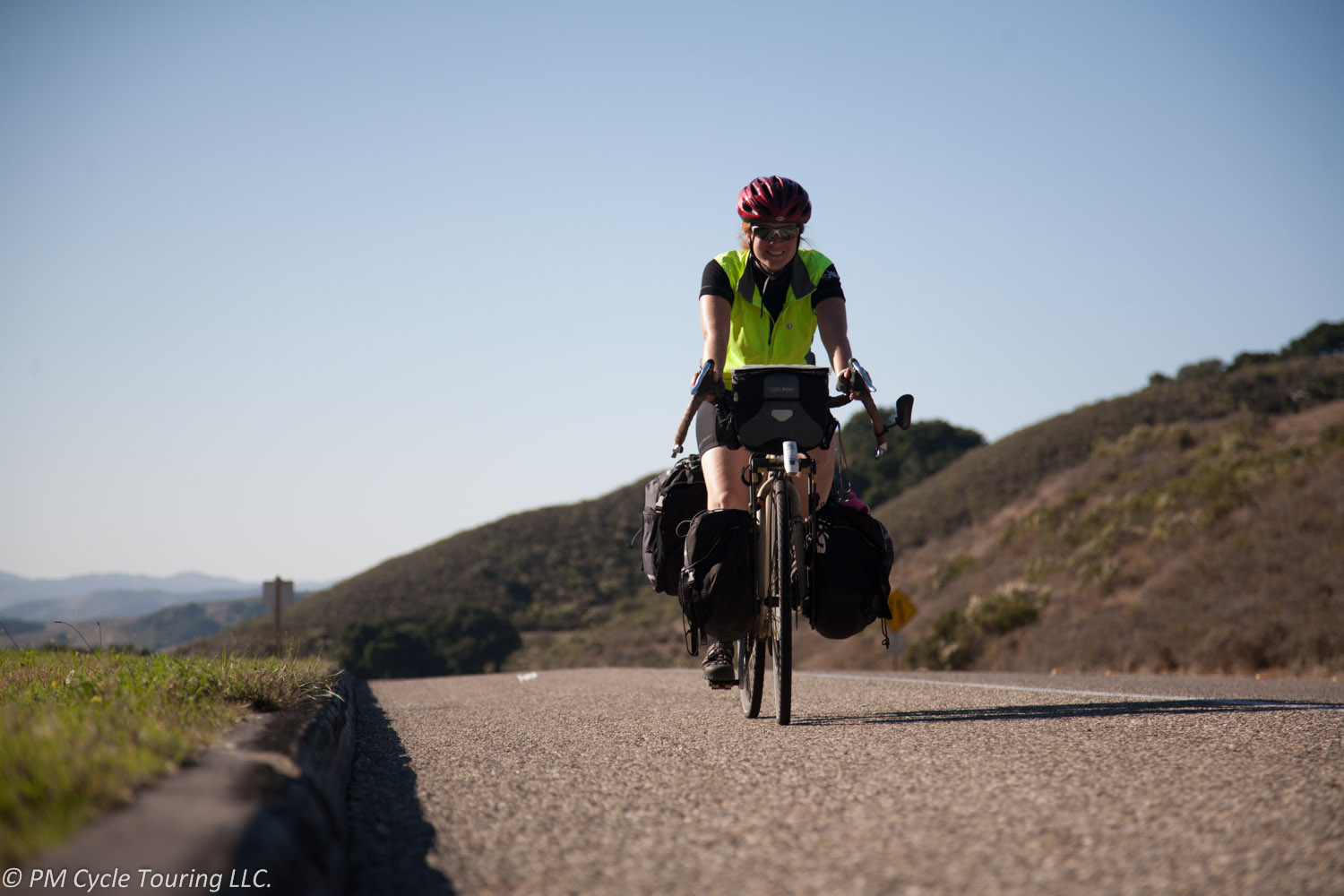Touring is blissfully simple: you hop on your bicycle and pedal from where you are to some new place. Life doesn’t get more straightforward. However, I often see people struggling with way too much gear on their bikes. In fact, for my first tour I suffered myself. I inappropriately carried heavy books, a pasta strainer, an extra Camelback, and a few more things which I had to send back home.
Since that first tour I have become a believer in ultralight bicycle touring. With modern technology and modern industry there are now extremely lightweight products that perform with enough durability for use on even the longest of tours. On our last 2,500 mile tour of the Southern Tier my wife and I managed to pack 41lbs of gear between the two of us including the weight of the panniers (click here for our packing list). When planning to shed weight there are a few high return areas: unneeded equipment, sleeping bags, camp stove, and tent, as well as substituting single-use items with multiple-use items.
Unneeded Equipment: First and foremost lay out all of your items and ask yourself if you need each one. The chances are good that there are several things you think will be useful but after consideration you may change your mind. Remember that you will have to carry these items for hundreds (or thousands) of miles. A few common offenders are:
- Hammers for tent stakes
- Trust me. There will almost always be a rock or tree branch that you can use to drive your stakes into the ground. If nothing is available at the campsite you can always tie a string from the tent to a bicycle. If you’re in a campground, a fellow camper will probably let you borrow his.
- Excessive amounts of clothing
- Not only does excess clothing add weight to your total, it adds bulk to the packs. You can easily get by with 2-3 pairs of shorts and shirts for an extended tour. Rinse in the sink or shower as needed, and hang in a mesh bag off the panniers while riding to dry. There’s a fine line to walk in this area. See our packing list for specifics on what we like to bring.
- Lanterns or extra-large flashlights
- A simple head lamp placed next to a clear plastic water bottle creates an excellent camp light. The head lamp will be light weight and usually satisfies any laws for riding at night. If you are counting grams lithium batteries will be lighter and perform better in cold temperatures.
Multiple Uses: Analyze your equipment that you may be able to get two (or three) uses out of. For example our stove has a plastic insert to prevent the non-stick coating from getting scratched. That insert makes for a handy bowl to eat out of: no need to carry an extra one. Our cycling rain jackets work as camp jackets and wind breakers. Much of our clothing can be used either on or off the bike.
Finally, remember that fancy/expensive is not always the lightest weight nor the most functional. In the next article I will dive in to some specific pieces of equipment that I have found substantial weight savings, including dry sacks, sleeping bags, and tents. If you have any ultra-light bicycle touring tips or tricks let me know in the comments below.
